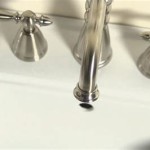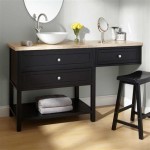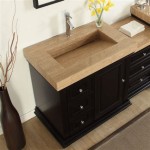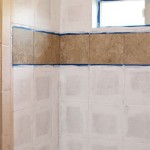How Often Should You Refurbish Your Bathroom?
Determining the optimal frequency for bathroom refurbishment is a multifaceted decision contingent on various factors, including the quality of initial construction, the intensity of usage, maintenance practices, and evolving aesthetic preferences. A rigid timeline is not universally applicable; instead, a holistic evaluation of the bathroom's condition, functionality, and personal needs is paramount to making an informed decision regarding refurbishment.
The bathroom, unlike other rooms in a house, is constantly subjected to moisture, temperature fluctuations, and potentially harsh chemicals. These conditions accelerate wear and tear on fixtures, surfaces, and structural components. Regular monitoring and proactive maintenance can significantly extend the lifespan of a bathroom, delaying the need for complete refurbishment. However, understanding the signs that indicate refurbishment is becoming necessary is crucial to preventing more significant, and potentially costly, problems.
Assessing the State of Fixtures and Fittings
The lifespan of bathroom fixtures and fittings is a key indicator of refurbishment needs. Items such as toilets, sinks, showers, and bathtubs have inherent limitations in their operational lifespan. The materials used in their construction, the frequency of use, and the water quality all contribute to their eventual degradation. For instance, a toilet that experiences constant clogging, leaks, or requires frequent repairs may be nearing the end of its useful life. Similarly, a sink with persistent chips, cracks, or discoloration could be a candidate for replacement. Showerheads and faucets may become corroded, lose their efficiency due to mineral buildup, or simply become outdated in terms of water-saving technology.
Furthermore, plumbing infrastructure associated with these fixtures can also necessitate refurbishment. Aging pipes, especially those made of galvanized steel, are prone to corrosion and can lead to reduced water pressure, leaks, and even water contamination. Replacing these outdated plumbing systems is a crucial aspect of many bathroom refurbishment projects, ensuring both functionality and water safety. Examining the caulking around fixtures and the grout between tiles is essential. Deteriorated caulking and grout allow water penetration, which can lead to mold growth and structural damage behind walls and under flooring. If you notice persistent mold despite regular cleaning, it could indicate a larger, hidden problem that necessitates immediate attention and potentially a full refurbishment.
Beyond functionality, the aesthetic appeal of fixtures also contributes to the decision to refurbish. Styles change over time, and outdated fixtures can detract from the overall appearance and value of a property. Replacing these with more modern and energy-efficient options not only improves the bathroom's functionality but also enhances its visual appeal and potentially increases the property's market value. A comprehensive assessment of all fixtures, fittings, and their associated plumbing is essential to determining the scope and urgency of a bathroom refurbishment project.
Evaluating Structural and Surface Conditions
The structural integrity and surface conditions of a bathroom are critical factors influencing the frequency of refurbishment. Persistent moisture exposure, common in bathrooms, can cause significant damage to walls, floors, and ceilings. Water leaks, inadequate ventilation, and improper sealing can lead to the growth of mold, mildew, and rot, compromising the structural integrity of these elements. Staining, peeling paint, and crumbling drywall are visual indicators of moisture-related damage.
Flooring materials, such as tile, vinyl, or wood, are also susceptible to damage from water and heavy use. Cracked or broken tiles, warped vinyl, or water-stained wood are signs that the flooring needs attention. In some cases, localized repairs may suffice, but extensive damage may necessitate complete floor replacement. Subflooring, the layer beneath the visible flooring, is particularly vulnerable to water damage. If the subflooring becomes weakened or rotted, it can compromise the stability of the entire floor and require a more extensive refurbishment project.
Ceilings in bathrooms are also prone to moisture damage due to steam from showers and baths. Paint peeling, discoloration, and sagging are all signs of potential problems. In severe cases, water damage can even compromise the structural integrity of the ceiling, posing a safety hazard. Addressing structural and surface damage promptly is crucial to preventing further deterioration and potential health risks. A thorough inspection of walls, floors, and ceilings, including checking for leaks and signs of mold growth, is essential to assessing the overall condition of the bathroom and determining the need for refurbishment.
Considering Lifestyle and Modernization Needs
Beyond purely functional considerations, lifestyle changes and the desire for modernization can also drive the decision to refurbish a bathroom. Evolving needs, such as accommodating elderly or disabled family members, may necessitate modifications to the bathroom layout and features. Installing grab bars, a walk-in shower, or a taller toilet can significantly improve accessibility and safety for individuals with mobility limitations.
Furthermore, technological advancements in bathroom fixtures and appliances can also motivate refurbishment. Water-saving toilets, low-flow showerheads, and touchless faucets can reduce water consumption and lower utility bills. Smart bathroom features, such as digital shower controls, heated floors, and integrated lighting systems, can enhance comfort and convenience. Energy-efficient lighting options, such as LED fixtures, can also reduce energy consumption and provide better illumination.
Aesthetic preferences also play a significant role in the decision to refurbish. Outdated color schemes, tile patterns, and fixture styles can detract from the overall appearance of a home. Refurbishing the bathroom provides an opportunity to update the décor and create a more modern and personalized space. This may involve replacing outdated fixtures, repainting walls, installing new flooring, or adding decorative elements. Ultimately, the decision to refurbish a bathroom based on lifestyle and modernization needs is a personal one, driven by the desire to improve functionality, comfort, and aesthetic appeal.
Regular cleaning and preventative maintenance are essential for extending the life of your bathroom and delaying the need for a full refurbishment. Properly ventilating your bathroom after showers and baths help alleviate moisture build up. Regularly cleaning surfaces help prevent mildew and mold issues. Promptly addressing any leaks or minor repairs can prevent larger issues from arising. These measures can significantly extend the lifespan of your bathroom and keep it looking its best.
The scope of a bathroom refurbishment project can range from minor cosmetic updates to a complete overhaul. Minor updates might include repainting walls, replacing outdated fixtures, or adding new accessories. These types of projects are generally less expensive and time-consuming. A complete overhaul, on the other hand, involves replacing the flooring, walls, and fixtures, as well as updating the plumbing and electrical systems. This type of project is more expensive, but it can significantly improve the functionality and value of the bathroom.
Budget considerations are also crucial when planning a bathroom refurbishment project. It's essential to establish a realistic budget before starting the project and to stick to it as closely as possible. There are ways to save money on the project such as doing some of the work yourself. However, it's important to consider your skill level and time constraints before taking on any DIY projects. If you're not comfortable with certain tasks, it's best to hire a professional.
Ultimately, the frequency of bathroom refurbishment is a decision best made based on individual circumstances. Careful assessment of the factors outlined above are essential to determine the appropriate timing. While there is no one-size-fits-all answer, taking a proactive approach to maintenance and addressing issues promptly can extend the lifespan of a bathroom and ensure it remains a functional and aesthetically pleasing space for years to come.

How Often Should You Renovate Your Bathroom Rwc

How Often Should You Remodel Or Update Bathroom Firea Stone

How Often Should You Renovate Your Bathroom Daniel S Development Group Inc

How Often Should You Update Your Bathroom Big

How Often Should You Renovate Your Bathroom

How Often Should You Remodel Your Bathroom

How Often Should You Update Your Bathroom Big

How Often Should You Update Your Bathroom Big

When Should You Renovate Your Bathroom City Mirror Glass

How Frequently Should You Renovate Your Bathroom
Related Posts







